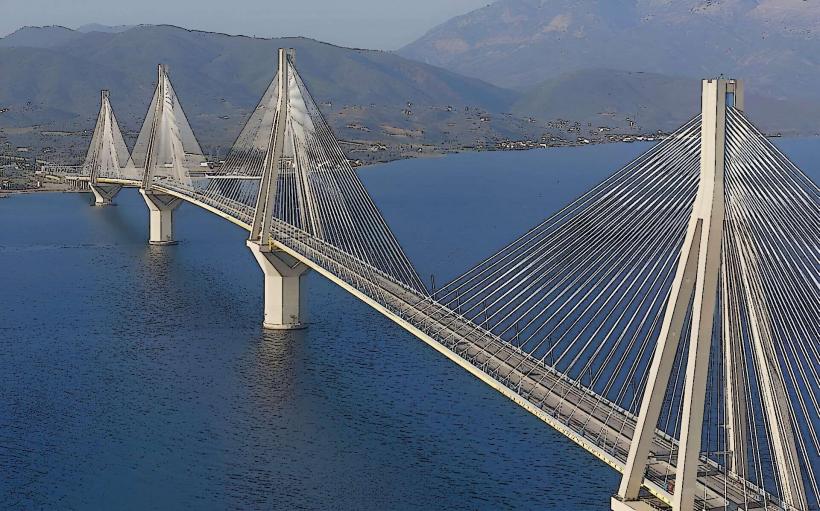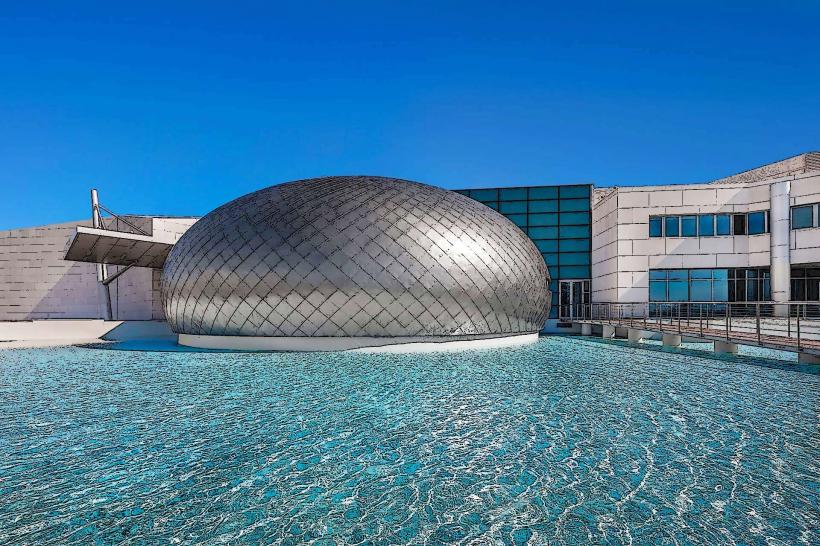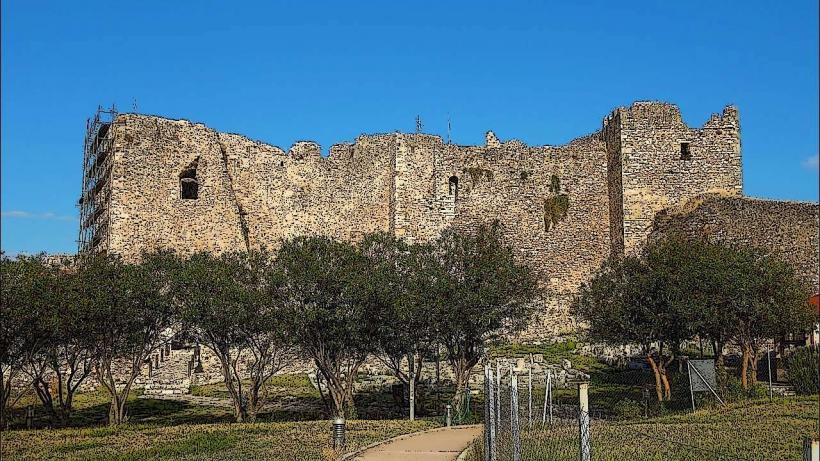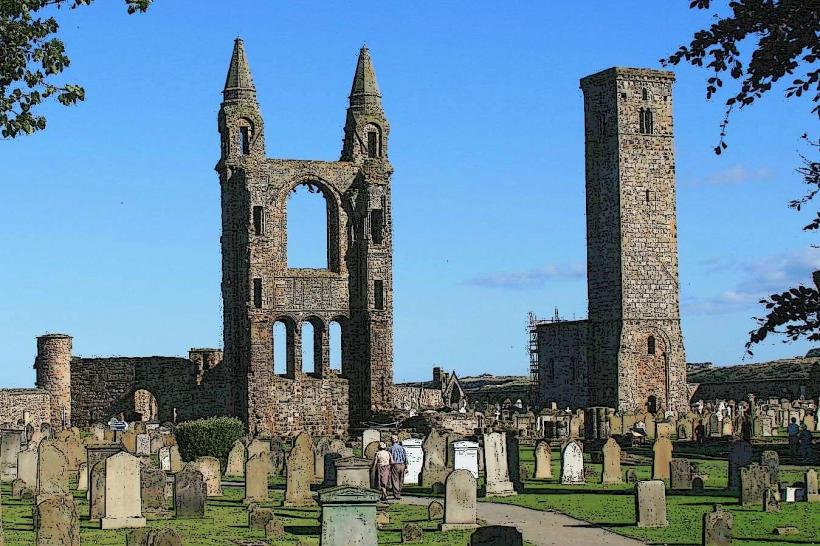Information
Landmark: Achaia Clauss WineryCity: Patras
Country: Greece
Continent: Europe
Achaia Clauss Winery is one of the most renowned and historic wineries in Greece, located near the city of Patras, in the Achaea region of western Greece. Founded in 1861, it is particularly famous for producing some of Greece’s most distinguished wines, including the iconic Mavrodaphne of Patras.
History of Achaia Clauss Winery:
Founding:
- The winery was established by Gustav Clauss, a German entrepreneur who settled in Patras and recognized the potential of the region for wine production. Clauss, who originally worked in the wine trade in Germany, decided to invest in Achaia due to the area's favorable climate and long-standing tradition of viticulture.
- The winery's first vines were planted in the fertile soil of the region, and it quickly gained a reputation for producing high-quality wine.
Mavrodaphne of Patras:
- One of the winery’s most famous contributions is the production of Mavrodaphne, a sweet red wine made from the indigenous Mavrodaphne grape variety. This wine has become synonymous with the Achaia region and is highly regarded both in Greece and internationally.
- Mavrodaphne of Patras is a fortified wine, often compared to Port wine, and has a rich, deep flavor profile with notes of dried fruits, spices, and a hint of sweetness.
Expansion and Modernization:
- Over the years, Achaia Clauss Winery expanded its operations, and by the 20th century, it had become one of the leading producers in Greece. The winery continued to modernize and improve its production methods while staying true to its traditional roots.
- The winery was sold to the Greek family-run group Cavino in 1987 but retained the name Achaia Clauss as a hallmark of quality and tradition.
The Winery and Vineyards:
Location:
- The winery is located on a hillside outside of Patras, near the town of Kato Achaia. The surrounding vineyards benefit from a combination of Mediterranean climate and diverse soils, creating ideal conditions for growing a variety of grape varieties.
- In addition to Mavrodaphne, the winery also produces Muscat of Patras, Roditis, and other indigenous Greek grape varieties, as well as some international varieties like Cabernet Sauvignon and Syrah.
Vineyards:
- Achaia Clauss owns extensive vineyards in the region, many of which are located near the foothills of Mount Panachaiko. The region’s mild winters and hot summers allow the grapes to ripen slowly, ensuring the development of rich flavors.
- The vineyard’s organic farming practices and respect for the environment have been key in producing high-quality, sustainable wines.
Wine Production:
Mavrodaphne Wine:
- The most famous wine produced by Achaia Clauss is Mavrodaphne of Patras. This wine is made from the Mavrodaphne grape, a native variety of the Achaia region. The wine is produced in various styles, from sweet, dessert wines to drier versions.
- The wine undergoes a process known as fortification, where alcohol is added to the wine to stop fermentation and preserve the natural sweetness. This method gives the wine its rich, complex flavors.
- Mavrodaphne wine is often aged in wooden casks, which contributes to its deep amber color and complex aromas.
Other Wines:
- Muscat of Patras: Another popular wine produced at Achaia Clauss is the Muscat of Patras, a white, aromatic wine with a strong, floral aroma and refreshing acidity.
- Roditis: This white wine is made from the Roditis grape variety, known for its light, fresh, and crisp character, with citrus and herbal notes.
- Cabernet Sauvignon and Syrah: The winery also produces red wines from international varieties like Cabernet Sauvignon and Syrah, offering a blend of local tradition and global wine culture.
The Winery’s Estate and Museum:
The Winery Building:
- The winery is housed in a historic building, which is a blend of traditional architecture and modern winemaking facilities. The site includes both production areas and aging cellars where the wines are stored in wooden casks and barrels for aging.
- Visitors to the winery can explore the facilities and learn about the winemaking process, from vine to bottle. The estate is beautifully landscaped, and it’s a picturesque place for visitors interested in wine tourism.
Museum:
- Achaia Clauss Winery also features a wine museum, which showcases the rich history of the winery and the winemaking tradition in the region of Achaia. The museum houses vintage bottles, winemaking tools, and other memorabilia that chronicle the evolution of the winery and the local wine culture.
Visiting Achaia Clauss Winery:
- Tours and Tastings:
- Visitors to Achaia Clauss Winery can participate in guided tours of the winery and vineyards, where they can learn about the history of wine production in the region, the different grape varieties grown, and the winemaking process.
- Wine tastings are a central part of the experience, where guests can sample a variety of the winery’s wines, including the famous Mavrodaphne of Patras, and enjoy pairing them with local cheeses and snacks.
- The estate offers stunning views of the surrounding countryside, and the site’s historical significance makes it an interesting destination for wine lovers and history enthusiasts alike.
Awards and Recognition:
- Achaia Clauss Winery has earned several awards for its wines, particularly Mavrodaphne of Patras, which is one of Greece’s most celebrated wines. The winery’s long history of producing high-quality wines has made it a pillar of Greek winemaking and a symbol of the country’s winemaking heritage.
Conclusion:
Achaia Clauss Winery is a testament to the rich history and tradition of Greek winemaking. It continues to produce some of the country’s finest wines, with a special focus on Mavrodaphne, a wine that has become emblematic of the Patras region. The winery’s beautiful estate, informative tours, and dedication to quality make it a must-visit destination for wine enthusiasts and anyone interested in experiencing the flavors and heritage of Greece.





